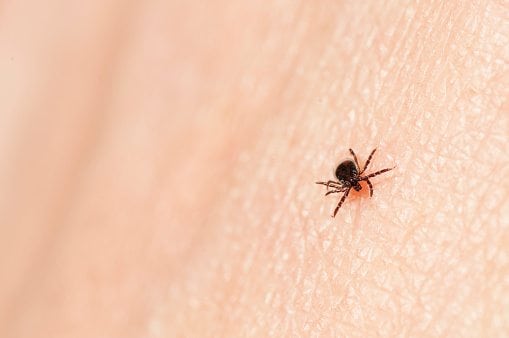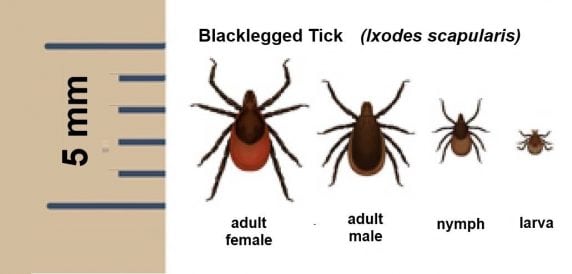<< Back
What Percentage Of Deer Ticks In Connecticut Carry Lyme Disease?

June 03, 2020
The blacklegged tick, commonly known as the deer tick, loves the warmer winters.
The more temperate conditions — and the growing deer population — have contributed to a sharp increase in deer ticks in Connecticut that carry Lyme disease, says the Connecticut Agricultural Experiment Station. In 2019 testing of 3,517 blacklegged (deer) ticks, 35.7 percent carried Lyme disease.
“We are currently in the midst of the peak activity sason for adult blacklegged ticks,” says Dr. Gourdarz Molaei, director of the CAES Passive Tick Surveillance and Testing Program, “and nearing the season for increased nymphal activity, which are often more difficult to detect because of their small size and propensity to quickly attach and feed.”
 The number of people infected with Lyme disease remains uncertain because it’s difficult to diagnose and often unreported. Some people test positive when they actually have a different bacterial illness. Some with Lyme disease test negative. Symptoms of chronic Lyme disease also often mimic chronic fatigue syndrome, fibromyalgia and juvenile idiopathic arthritis.
The number of people infected with Lyme disease remains uncertain because it’s difficult to diagnose and often unreported. Some people test positive when they actually have a different bacterial illness. Some with Lyme disease test negative. Symptoms of chronic Lyme disease also often mimic chronic fatigue syndrome, fibromyalgia and juvenile idiopathic arthritis.
The Connecticut Department of Public Health reports about 3,000 cases each year to the Centers for Disease Control and Prevention, but the CDC estimates actual cases at 10 times that number. Lyme, where the disease originated in 1975 when a group of adults and children reported unusual arthritic-like symptoms, reported only two confirmed cases (and four probables) in 2018. But Connecticut remains one of 14 states, according to the CDC, responsible for 95 percent of confirmed cases. (For a town-by-town breakdown of cases reported to the state Department of Public Health in 2018, the most recent available data, click here.)
What it takes to get infected: It’s not so much a tick bite as a long-term tick residency on your skin. An infected tick attached to your skin for less than 36 to 48 hours is unlikely to transmit Lyme disease. Surprised? Your mother was right: “Check yourself for ticks!”
What to look for: A rash that appears from three to 30 days after the bite, expanding up to 12 inches. It may or may not develop into a bull’s-eye pattern. But be careful: Up to 30 percent of people infected with Lyme disease do not get a rash. Other symptoms might resemble the flu: Fever, chills, headache and body aches. Check with your doctor as soon as possible.
Testing: A two-step laboratory blood test checks for signs of antibodies against Lyme disease bacteria. The first step, enzyme immunoassay (EIA), determines if the second step, immunoblot (or Western blot), is required. Both results must be positive for a Lyme disease diagnosis.
Prevention: Wear long pants, long sleeves and light-colored clothing, which makes it easier to detect ticks. Spray exposed skin with a repellant that contains up to 30 percent DEET. A permethrin (0.5 percent) spray works best on clothing, shoes, sneakers and other gear.
Ticks attached to clothing can survive machine washing. To kill any ticks, tumble-dry clothes on high heat for 10 minutes. If the clothes must be washed first, use hot water.
How to remove a tick: The CDC recommends fine-tipped tweezers.
- Grasp the tick close to the skin.
- Pull steadily, with even pressure. A twist or other sudden movement could cause the tick’s mouth parts to break off and remain in the skin.
- After removal, clean the area thoroughly with rubbing alcohol, iodine or soap and water.
Need to see your doctor? New Patient? For more information about Hartford HealthCare virtual health visits, click here.
Click here to schedule a virtual visit with a Hartford HealthCare-GoHealth Urgent care doctor. Find out more about COVID-19 antibody tests here.
Sign up for our “Coping with COVID” podcast series here.
Stay with Hartford HealthCare for everything you need to know about the coronavirus threat. Click here for information updated daily.
Questions? Call our 24-hour hotline (860.972.8100 or, toll-free, 833.621.0600).